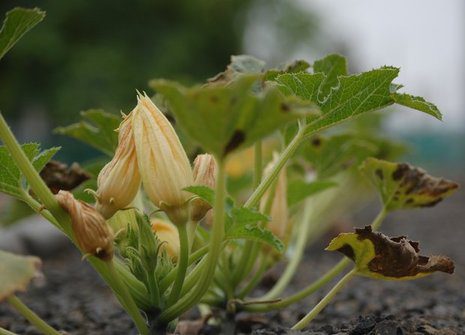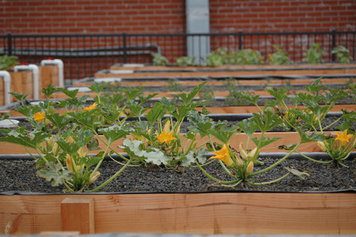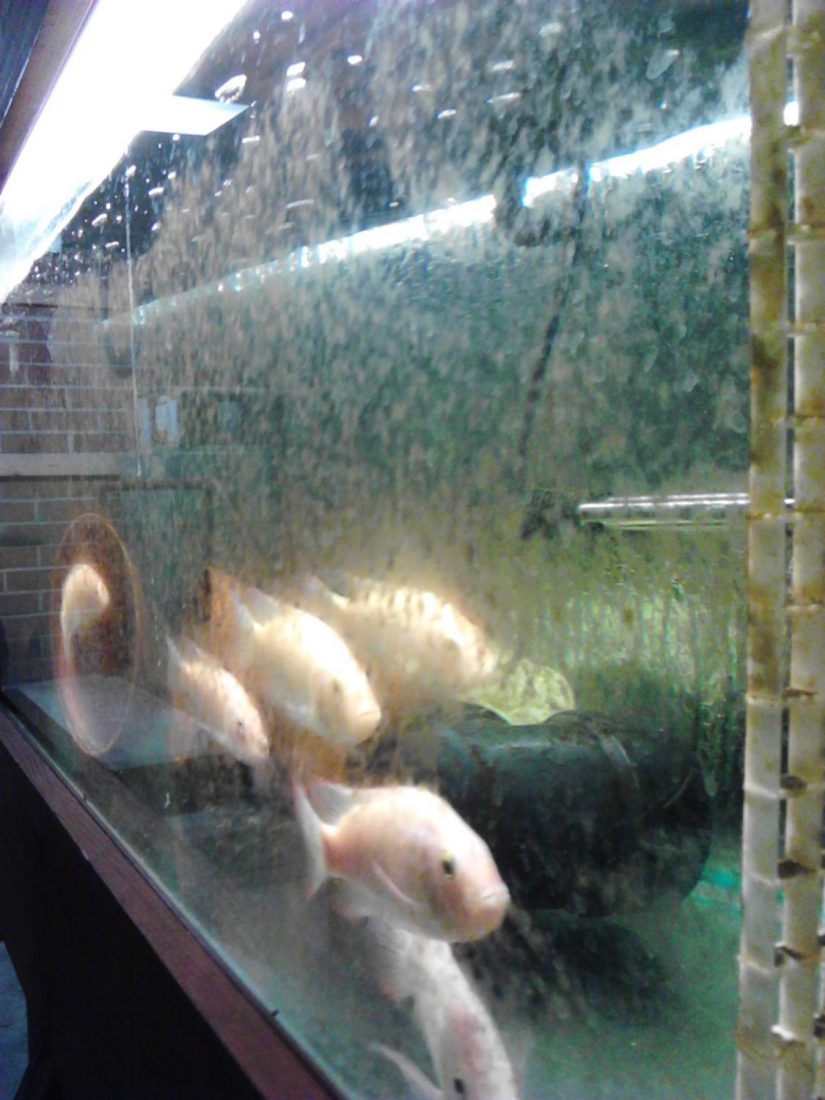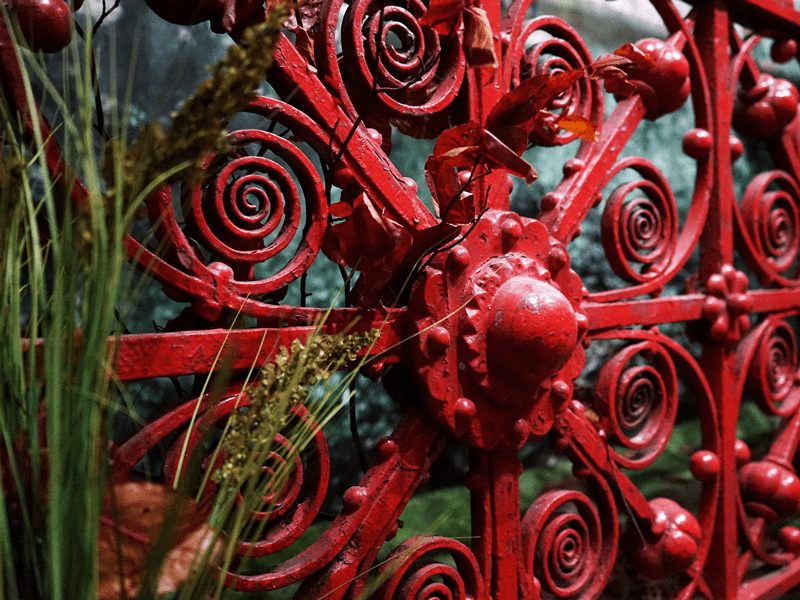Listen to this article
Listen to this article
Loading
Play
Pause
Options
0:00
-:--
1x
Playback Speed- 0.5
- 0.6
- 0.7
- 0.8
- 0.9
- 1
- 1.1
- 1.2
- 1.3
- 1.5
- 2
Audio Language
- English
- French
- German
- Italian
- Spanish
Open text
aquaponics in anaheim. envoy michael freeman and his wife joanna run anaheim’s recently renovated praiseworks corps community center. descending a flight of stairs in the anaheim (calif.,) praiseworks corps community center, we approach a locked door. envoy michael freeman draws the basement key from his pocket like an old west gunslinger; he knows the place like the back of his hand. he unlocks the door and before our eyes can to adjust to the darkness, he flicks on the light. “not what you’d expect to find in the basement of a salvation army, is it?” freeman smirked, gesturing toward a propped-up aquarium housing seven full-fledged tilapia––the only notable source of light in the still-dim basement. while no spectacular sight, these breeder fish are the lifeblood of an outreach initiative few in the salvation army have dared to venture into: aquaponics––a sustainable food production system that conflates farming fish with growing crops by recirculating water between the two environments. it started on the walk back from a staff dinner at rubio’s late last year. freeman and aaron flores, worship and creative arts director, were casually discussing ways they could both generate more income and make use of the empty blacktop lot behind the community center when flores mentioned he had a friend who builds aquaponics farms. the lot offers 1,000 square feet of growing space for the fruits and vegetables. “overall i think the feeling was, ‘this is worth the risk,’” flores said. “we really don’t treat our community center as a facility. it’s really important that it’s used as a mission and it’s okay to take risks for the bigger picture.“ staff members were impressed by the amount of food this small garden could produce for the community.within only a few months, the vision became a reality. aaron flora, owner of renewable farms––a sustainable agriculture consulting company––designed the farm to fit the space on the empty lot, and in just two weekends, roughly 40 volunteers helped construct the foundation for the system. back up the stairs and out the rear door of the prominently signed “salvation army church”––bold in its own right––lies the finished product. there, 15 wooden, gravel-lined beds form a labyrinth beneath the beating sun, sprouting life––tomatoes, cucumbers, zucchini, swiss chard, sweet peas, honeydew and melon. a few yards away are three 10,000-gallon fish tanks full of young, sprightly bottom-dwellers. the ammonia in the fish waste is pumped out of the tanks and into the plant beds, converted to nitrites, and then nitrates, which the plants absorb as food. this process cleans the water, which is then pumped back into the fish tanks. essentially, the fish waste helps the plants grow and the plants purify the water for the fish. “we’re basically just recreating a chunk of the ecosystem,” said flora, who has built aquaponics farms around the u.s., in africa and asia. “i think people don’t really believe it. everyone asks, ‘where’s the soil? where’s the dirt?’ they don’t understand that you can grow plants with gravel, so when they see the system and they don’t see the dirt, they think it’s some kind of alien science.”. though relatively low maintenance, the “closed loop” system requires daily attention and if compromised, needs to be recreated almost from scratch. the farm’s delicacy paired with its potential make it a textbook high-risk, high-reward initiative. “we’re a little bit of a guinea pig,” freeman said. once the system reaches full maturity, they expect to be able to produce around 450 plants a month and between 6,000-7,000 tilapia a year. that’s right––those seven “basement breeders” can reproduce well over 100 offspring a week. the opportunity to make this amount of high-scale, organic food accessible to lower-income residents was highly appealing to freeman. these “basement breeders” are reproducing all of the tilapia for the farm. “i know when i go to sprouts, i pay a fortune for this stuff,” freeman said, “so it’s great to be able to have it here and have it fairly priced for the community.”. the fresh fish and produce would be a welcome addition to the community center’s emergency food pantry, which mainly distributes an assortment of canned and boxed food items. once fully operational, the farm will also be able to supply the anaheim adult rehabilitation center. freeman even plans to sell the fresh fish and produce to local restaurants and eventually start a farmers market at the community center. “even if we don’t sell a ton, we’re still out there and people are learning about what the salvation army does,” freeman said. the salvation army isn’t just about drug and alcohol rehab. there’sa lot more to what we do.”. situated across the street from two elementary schools and adjacent to a retirement home, the facility’s location naturally make the aquaponics farm ideal for educational purposes. “we’ve talked about dedicating one of these whole planters to the seniors,” freeman said. “[they would] kind of have their own thing––they plant it, they harvest it, they keep it and get the kids involved too.”. aquaponics is an emerging technology due to its cost effectiveness and capacity to serve. billings, mont., and long beach, calif., are just two other salvation army locations that have experimented with aquaponics. the anaheim corps is the largest in the western territory to build an aquaponics farm thus far, and its pending success could prompt others to follow suit. flora had no prior experience working with the salvation army but said he would love to build more aquaponics farms for them in the future. “i had no idea what the salvation army did,” flora said. “once i started working here, the staff just let me in on how the whole system runs and i was so impressed at how they’re able to help people.”. [button color=”black” size=”normal” alignment=”none” rel=”follow” openin=”newwindow” url=” here to listen to aquaponics expert aaron flora dish on the inner workings of aquaponics.[/button]
Open context player
Close context player
Plays:-Audio plays count
aquaponics in anaheim. envoy michael freeman and his wife joanna run anaheim’s recently renovated praiseworks corps community center. descending a flight of stairs in the anaheim (calif.,) praiseworks corps community center, we approach a locked door. envoy michael freeman draws the basement key from his pocket like an old west gunslinger; he knows the place like the back of his hand. he unlocks the door and before our eyes can to adjust to the darkness, he flicks on the light. “not what you’d expect to find in the basement of a salvation army, is it?” freeman smirked, gesturing toward a propped-up aquarium housing seven full-fledged tilapia––the only notable source of light in the still-dim basement. while no spectacular sight, these breeder fish are the lifeblood of an outreach initiative few in the salvation army have dared to venture into: aquaponics––a sustainable food production system that conflates farming fish with growing crops by recirculating water between the two environments. it started on the walk back from a staff dinner at rubio’s late last year. freeman and aaron flores, worship and creative arts director, were casually discussing ways they could both generate more income and make use of the empty blacktop lot behind the community center when flores mentioned he had a friend who builds aquaponics farms. the lot offers 1,000 square feet of growing space for the fruits and vegetables. “overall i think the feeling was, ‘this is worth the risk,’” flores said. “we really don’t treat our community center as a facility. it’s really important that it’s used as a mission and it’s okay to take risks for the bigger picture.“ staff members were impressed by the amount of food this small garden could produce for the community.within only a few months, the vision became a reality. aaron flora, owner of renewable farms––a sustainable agriculture consulting company––designed the farm to fit the space on the empty lot, and in just two weekends, roughly 40 volunteers helped construct the foundation for the system. back up the stairs and out the rear door of the prominently signed “salvation army church”––bold in its own right––lies the finished product. there, 15 wooden, gravel-lined beds form a labyrinth beneath the beating sun, sprouting life––tomatoes, cucumbers, zucchini, swiss chard, sweet peas, honeydew and melon. a few yards away are three 10,000-gallon fish tanks full of young, sprightly bottom-dwellers. the ammonia in the fish waste is pumped out of the tanks and into the plant beds, converted to nitrites, and then nitrates, which the plants absorb as food. this process cleans the water, which is then pumped back into the fish tanks. essentially, the fish waste helps the plants grow and the plants purify the water for the fish. “we’re basically just recreating a chunk of the ecosystem,” said flora, who has built aquaponics farms around the u.s., in africa and asia. “i think people don’t really believe it. everyone asks, ‘where’s the soil? where’s the dirt?’ they don’t understand that you can grow plants with gravel, so when they see the system and they don’t see the dirt, they think it’s some kind of alien science.”. though relatively low maintenance, the “closed loop” system requires daily attention and if compromised, needs to be recreated almost from scratch. the farm’s delicacy paired with its potential make it a textbook high-risk, high-reward initiative. “we’re a little bit of a guinea pig,” freeman said. once the system reaches full maturity, they expect to be able to produce around 450 plants a month and between 6,000-7,000 tilapia a year. that’s right––those seven “basement breeders” can reproduce well over 100 offspring a week. the opportunity to make this amount of high-scale, organic food accessible to lower-income residents was highly appealing to freeman. these “basement breeders” are reproducing all of the tilapia for the farm. “i know when i go to sprouts, i pay a fortune for this stuff,” freeman said, “so it’s great to be able to have it here and have it fairly priced for the community.”. the fresh fish and produce would be a welcome addition to the community center’s emergency food pantry, which mainly distributes an assortment of canned and boxed food items. once fully operational, the farm will also be able to supply the anaheim adult rehabilitation center. freeman even plans to sell the fresh fish and produce to local restaurants and eventually start a farmers market at the community center. “even if we don’t sell a ton, we’re still out there and people are learning about what the salvation army does,” freeman said. the salvation army isn’t just about drug and alcohol rehab. there’sa lot more to what we do.”. situated across the street from two elementary schools and adjacent to a retirement home, the facility’s location naturally make the aquaponics farm ideal for educational purposes. “we’ve talked about dedicating one of these whole planters to the seniors,” freeman said. “[they would] kind of have their own thing––they plant it, they harvest it, they keep it and get the kids involved too.”. aquaponics is an emerging technology due to its cost effectiveness and capacity to serve. billings, mont., and long beach, calif., are just two other salvation army locations that have experimented with aquaponics. the anaheim corps is the largest in the western territory to build an aquaponics farm thus far, and its pending success could prompt others to follow suit. flora had no prior experience working with the salvation army but said he would love to build more aquaponics farms for them in the future. “i had no idea what the salvation army did,” flora said. “once i started working here, the staff just let me in on how the whole system runs and i was so impressed at how they’re able to help people.”. [button color=”black” size=”normal” alignment=”none” rel=”follow” openin=”newwindow” url=” here to listen to aquaponics expert aaron flora dish on the inner workings of aquaponics.[/button]
Listen to this article



















